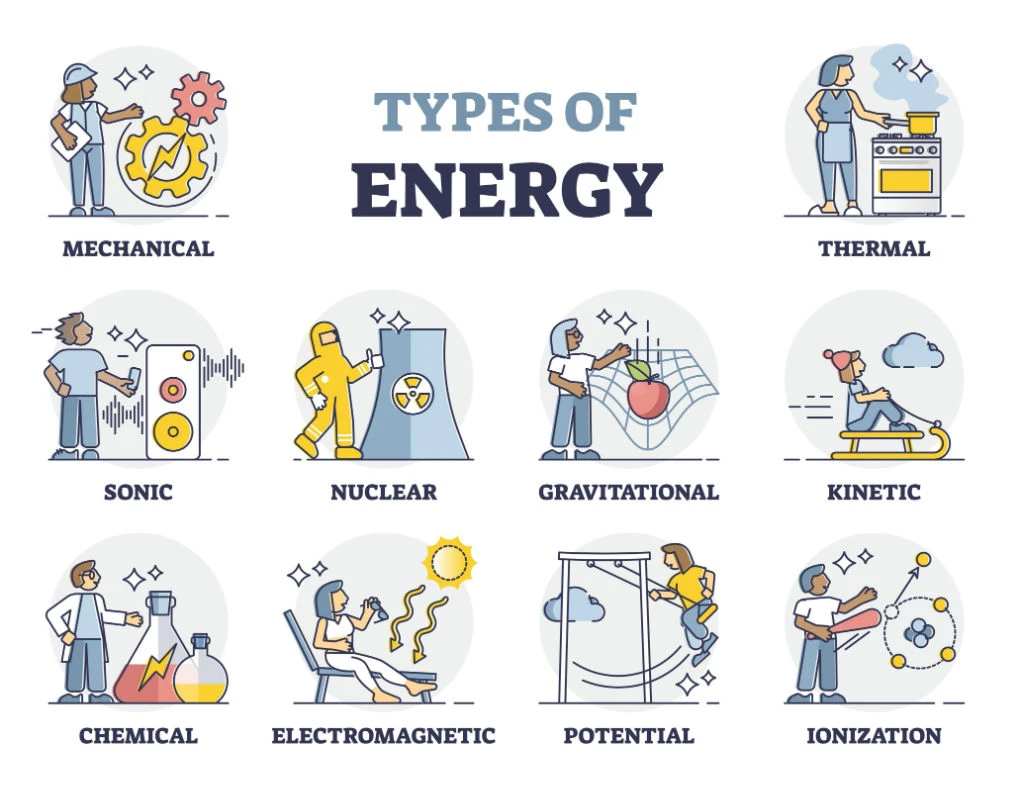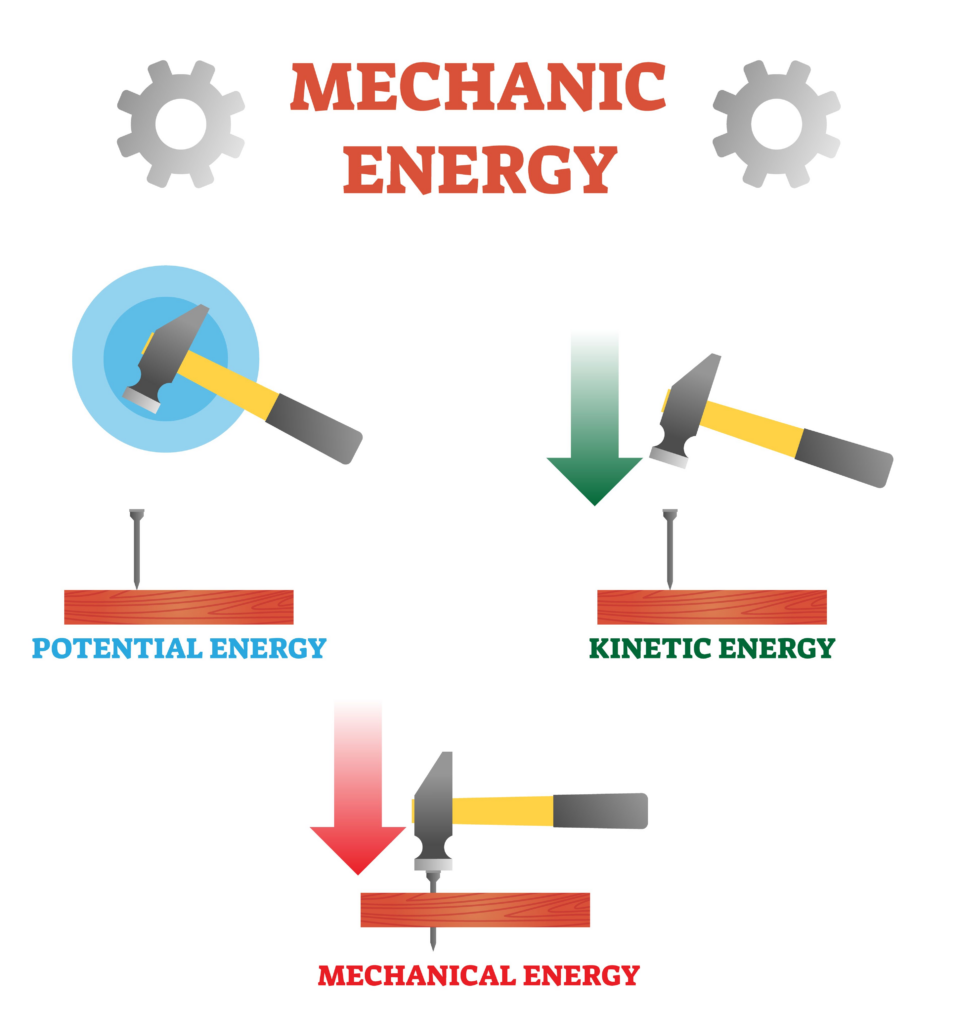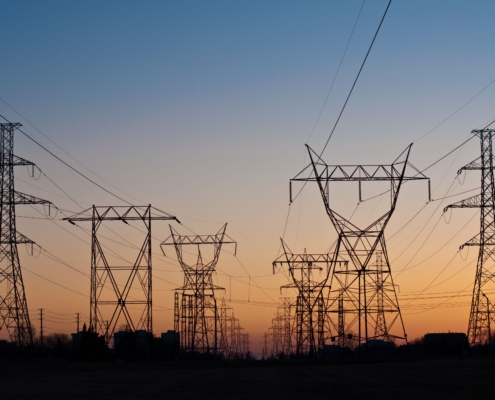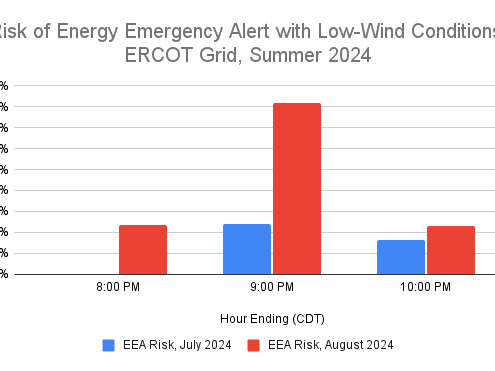Last Updated on November 14, 2022 by Mary Pressler
What is Energy?
Energy is a physical property that can be defined as the ability to do work – getting things done. For example, the wind has energy because it can push a sailboat, and a waterfall has energy because it can rotate a water wheel.
Energy is measured in joules (J), just like distance is measured in feet or meters. However, other energy units may be used depending on the application.
- The electrical energy consumed by homes and businesses is normally measured in kilowatt-hours (1 kWh = 3,600,000 Joules)
- The heat energy released by a furnace or removed by an air conditioner is measured in British Thermal Units (1 BTU = 1,055 Joules).
There are many types of energy, and it can be converted from one type to another. Your stove converts chemical energy from natural gas into heat energy for cooking, and a solar panel converts radiant energy from the sun into electricity. However, all forms of energy can be classified into two broad categories: potential and kinetic.
- Potential energy can be described as “stored energy”. A compressed spring, an elevated water tank and a charged battery all contain potential energy.
- Kinetic energy can be described as “energy in motion”. This can refer to the motion of visible objects and substances, but also the motion of invisible waves and microscopic particles like atoms and molecules.
The US Energy Information Administration provides a classification of the main types of energy:
| Forms of Potential Energy | Forms of Kinetic Energy |
| Chemical energy
Gravitational energy Mechanical energy Nuclear energy |
Electrical energy
Motion energy Radiant energy Sound Thermal energy |
Here we will provide a simple definition of each energy form, while discussing their most common real-world applications.
Chemical Energy (Potential)
The atoms that make up substances are held together by chemical bonds, which contain energy. There are three types of chemical bonds:
- Ionic, the type of bond that forms between metal and nonmetal atoms.
- Metallic, the type of bond between metal atoms.
- Covalent, the type of bond between nonmetal atoms.
When the chemical bonds between atoms are broken, the energy contained is released. Fossil fuels are an everyday example: oil, gas and coal are burned to release their chemical energy in the form of heat. This heat is used directly for space heating and industrial processes, converted into motion by vehicles, or converted into electricity by power plant turbines. Chemical energy is also being used when wood burns in a fireplace.
The human body also uses chemical energy, constantly breaking down the bonds between the atoms that make up food. Body cells are constantly breaking down carbohydrates into sugar, which is their main source of energy.
Gravitational Energy (Potential)
The concept of gravitational energy can be confusing at first, when taking elementary physics courses. All objects can potentially fall due to the Earth’s gravity, and this means they contain energy simply because of their position with respect to the planet. Gravitational energy cannot be observed directly, but its effects are visible when an object speeds due to gravity.
This is evident when driving downhill. Your car accelerates due to gravitational energy, and you must rely on the brakes to control speed.
- In this example, gravitational energy is being converted into kinetic energy (motion).
- The brakes dissipate motion energy as heat, slowing down your car.
Hydroelectric power plants rely on the gravitational energy contained by water as it moves from higher elevations to sea level. Hydraulic turbines rotate by extracting energy from moving water, and they drive electric generators. In this case, gravitational energy is converted into motion energy first, and then into electrical energy.
Gravitational energy depends on two main variables: the mass of an object and its height above the ground. A 10-kg object placed 5 m above the ground contains twice the gravitational energy as a 5-kg object at the same height. However, a 10-kg object placed 10 m above the ground contains twice the gravitational energy as the 10-kg object at 5 m.
Mechanical Energy (Potential)
Mechanical energy can be described as the energy stored by matter when stretched (tension) or compressed. For example, the rubber bands of a slingshot accumulate mechanical energy when stretched, and this becomes motion energy when a stone is launched. A spring can accumulate mechanical energy by either stretching or compressing, and it will always push in the opposite direction.
In general, mechanical energy is stored when an object is deformed with respect to its original shape. The object exerts a force that opposes the deformation.
Nuclear Energy (Potential)
Nuclear energy is contained in the bonds between the particles that make up the nucleus of an atom: protons and neutrons. Nuclear energy should not be confused with chemical energy, which is contained in the bonds between different atoms. In other words:
- Chemical energy is released by breaking the bonds between different atoms.
- Nuclear energy is released by breaking down the nuclei of individual atoms.
When chemical energy is used, the atoms themselves are not changed. For example, methane is composed of carbon and hydrogen atoms (CH4), which can burn in the presence of oxygen (O2). The reaction produces water (H2O) and carbon dioxide (CO2) – substances change, but not the individual atoms (carbon, hydrogen and oxygen). On the other hand, a nuclear reaction changes the identity of an atom, since there is a change in the number of protons and neutrons.
There are two types of nuclear reaction: fission occurs when an atom’s nucleus is split into lighter elements, while fusion occurs when nuclei are merged. Nuclear power plants use fission, and uranium is the most commonly used element. The sun can be described as a giant fusion reaction, where hydrogen atoms are fused into heavier elements.
Electrical Energy (Kinetic)
Electrical energy is carried by the motion of electrons, the negatively charged particles surrounding the nucleus of an atom. In the case of metals, these electrons are not bound tightly to the nucleus, and they can move easily from atom to atom creating electric current.
- Electrical conductors are normally made of metals like copper and aluminum.
- Graphite is the only nonmetal capable of conducting electricity.
Electrical energy has a very important role in modern society. Power grids are not perfect, but they provide the fastest and most efficient method to deliver large amounts of energy across long distances. Carrying megawatts of electricity with power lines is far more efficient than delivering fossil fuels and other energy sources by truck.
Motion Energy (Kinetic)
This type of kinetic energy is carried by objects of all sizes when they are in motion. Objects absorb energy when speeding up, and they release energy when slowing down. The motion energy carried by an object has a quadratic relationship with speed: when your car doubles its speed from 30 to 60 mph, its kinetic energy is multiplied by four.
- Motion energy can be linear or rotational, depending on how an object is moving.
- An object that travels while rotating has both linear and rotational kinetic energy.
Wind power is a common application of motion energy. Wind turbines are capable of extracting energy from moving air, which is then converted into rotational motion and used to drive an electric generator.
Radiant Energy (Kinetic)
Radiant energy is the type carried by electromagnetic waves. Light is a form of radiant energy: the portion of the electromagnetic wave spectrum that can be seen by human eyes. Radiant energy also includes the waves we cannot see, including:
- Radio waves
- Microwaves
- Infrared light
- Ultraviolet light
- X-rays
- Gamma rays.
Radiant energy has applications in multiple industries, including telecom and medicine. Solar photovoltaic panels generate electricity using free radiant energy provided by the sun.
Sound Energy (Kinetic)
Sound waves carry energy through objects and fluid substances, and those with a frequency between 20 and 20,000 Hertz can be heard by humans. Sound waves are produced when an object is exposed to a force that causes vibration. Sound is a longitudinal wave, which means the transmission medium constantly expands and contracts in the direction the wave is moving.
Sound is fundamental for communication. However, using sound waves to deliver large amounts of energy is not viable.
Thermal Energy (Kinetic)
Thermal energy is also known as heat. You can add thermal energy to a room to raise its temperature (space heating), or you can remove it to lower temperature (air conditioning). Manipulating thermal energy is very important in homes and buildings, to keep a suitable temperature for human occupancy.
Heat is also released as a waste product during energy conversion processes. For example, power plants only convert around 30-60% of the chemical energy from fossil fuels into electricity, and the rest becomes heat. However, some industrial processes can use waste heat from power generation.













Leave a Reply
Want to join the discussion?Feel free to contribute!